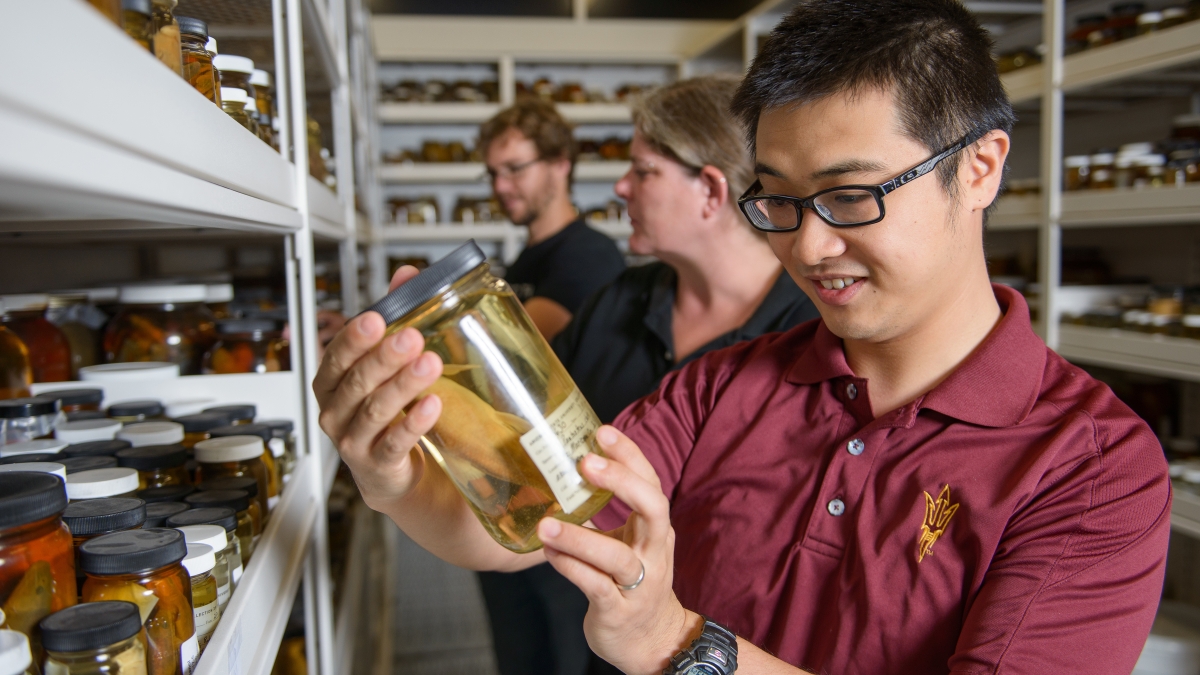ASU's Natural History Collections celebrate new home with grand opening

Arizona State University’s Natural History Collections are some of the best in the world, and boast nearly 1.8 million specimens among nine collections. Some of the largest include the Frank Hasbrouck Insect Collection, with close to one million specimens, and the Vascular Plant and Lichen Herbaria, with more than 400,000. Plant fossils, shells, reptiles and amphibians, fish, birds and mammals are also represented.
These research and teaching collections, previously housed in the Life Sciences buildings on the Tempe campus, have been moved to a newly remodeled 24,000-square-foot state-of-the-art facility. The collections, which include specimens from as far back as the late 1800s, had outgrown their previous space. Now, researchers, students and the public have greater access to them for research and community learning.
“We actually have a bit of a niche and a special place in the greater Phoenix metropolitan area,” said Nico Franz, associate professor with ASU’s School of Life Sciences and curator of the Hasbrouck Insect Collection. “With 4.5 million people living here, this is the only place of its kind. We can develop outreach in a very direct and immersed way, starting with traditional outreach to K-12 classes, as well as to people with physical or learning disabilities and to senior citizens.”
Specifically, with help from students and volunteers, ASU collections employees are working to improve scientific literacy in the community through targeted outreach programs and the use of innovative 3-D learning tools.
At an Oct. 2 grand opening, guests will get a behind-the-scenes look at the different collections and meet many of the researchers who curate the specimens. The remodeled Alameda Building now has a climate-controlled environment, space for teaching and community outreach, and plenty of storage to house existing specimens and allow for growth. In addition, the facility includes many safety and security improvements.
“Our vision is really to connect the physical vouchers with research and teaching,” shared Franz. “We are especially focused on undergraduate education. Now, we can offer courses in organismal biology in an immersed setting, which makes it a much more effective way to connect our research projects to our teaching programs.”
Scientists at ASU are also improving the collections by digitizing specimen records and images – adding them to online, public databases. For decades, collections records were maintained on paper, but now, online collections from around the world can be viewed in one place.
“Managing modern-day collections is very much about accessibility, both physically and virtually,” added Franz. “We have multiple, concurrent grants that allow us to digitize and image our holdings so that they can be available for research and teaching online.”
The $3.5 million renovation was completed in approximately eight months.
Project participants included RSP Architects and Brignall Construction Co. From ASU, project manager Anthony Gasca; Thomas Dowling, former director of collections; SOLS Facilities representatives Barbara Markley and Scott McAdams; Marty Wojciechowski, associate dean for Facilities in the College of Liberal Arts and Sciences and collections curators and their staff, including Les Landrum, Kathleen Pigg, Nico Franz, Walter Fertig, Charlotte Johnson, Elizabeth Makings, Sangmi Lee and Melody Basham.
The Oct. 2, 2014 Alameda Building Grand Opening begins at 4:45 p.m. with a ribbon-cutting ceremony at 5:30 p.m. Doors close at 8 p.m. The Alameda Open House is located at 734 W. Alameda Drive in Tempe. To attend, RSVP here.

